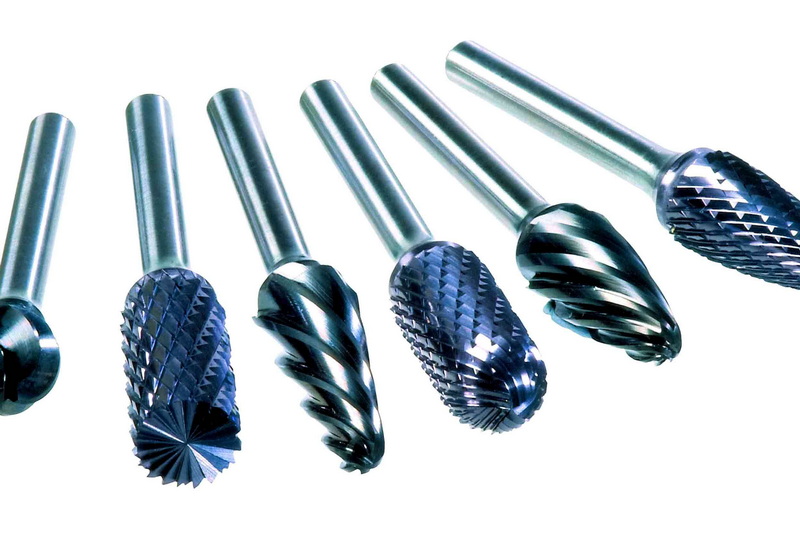Content Menu
● Introduction to Tungsten Carbide
● Synthesis of Tungsten Carbide
● Physical Properties of Tungsten Carbide
● Chemical Properties and Reactivity
● Applications of Tungsten Carbide
● Cemented Tungsten Carbide
● Recycling of Tungsten Carbide
● Safety Considerations
● Industrial Applications
● Conclusion
● FAQ
>> 1. What is the hardness of tungsten carbide?
>> 2. How is tungsten carbide synthesized?
>> 3. What are the primary applications of tungsten carbide?
>> 4. Is tungsten carbide reactive with acids?
>> 5. What safety precautions should be taken when handling tungsten carbide?
● Citations:
Tungsten carbide, known for its exceptional hardness and durability, is a compound of tungsten and carbon. It is widely used in cutting tools, wear-resistant parts, and other applications where high strength and resistance to wear are crucial. Understanding the reactivity of tungsten carbide is essential for its safe handling and effective use in various industrial processes.

Introduction to Tungsten Carbide
Tungsten carbide (WC) is a dense, metal-like substance with a high melting point of approximately 2870°C and a boiling point of 6000°C. It is about three times as stiff as steel, with a Young's modulus ranging from 530 to 700 GPa. Tungsten carbide is also twice as dense as steel, with a density of about 15.63 g/cm².
Synthesis of Tungsten Carbide
Tungsten carbide can be synthesized through several methods:
1. Reaction of Tungsten with Carbon: This involves heating tungsten metal with carbon at temperatures between 1400°C and 2000°C.
2. Reaction with Tungsten Trioxide (WO₃): WO₃ can be reacted with graphite at 900°C or in hydrogen at 670°C, followed by carburization in argon at 1000°C.
3. Chemical Vapor Deposition (CVD): Methods include reacting tungsten hexachloride with methane and hydrogen at 670°C, or tungsten hexafluoride with methanol and hydrogen at 350°C.
Physical Properties of Tungsten Carbide
Tungsten carbide is renowned for its physical properties:
- Hardness: It ranks about 9.0 to 9.5 on the Mohs scale and has a Vickers hardness of approximately 2600.
- Thermal Conductivity: It has a thermal conductivity of 110 W/(m·K).
- Thermal Expansion: The coefficient of thermal expansion is 5.5 μm/m·K.
Chemical Properties and Reactivity
Tungsten carbide exhibits several notable chemical properties:
- Oxidation: It starts to oxidize at 500–600°C.
- Solubility: It is insoluble in water but soluble in a mixture of nitric acid and hydrofluoric acid.
- Reactivity: It reacts violently with fluorine at room temperature and with chlorine above 400°C.
Applications of Tungsten Carbide
Due to its hardness and wear resistance, tungsten carbide is used in:
- Cutting Tools: Drills, saw blades, and milling tools.
- Wear-Resistant Parts: Nozzles, bearings, and abrasion-resistant coatings.
- Jewelry: Used in wedding bands and other jewelry due to its durability.

Cemented Tungsten Carbide
Cemented tungsten carbide, often mixed with cobalt as a binder, is used to enhance its toughness while maintaining hardness. This composite is widely used in industrial tools.
Recycling of Tungsten Carbide
The recycling of tungsten carbide is an important aspect of its lifecycle. One effective method is the oxidation process, which involves reacting waste tungsten carbide with oxygen to form tungsten and cobalt oxides. These oxides are then treated with alkali to produce water-soluble sodium tungstate, which can be separated from solid cobalt oxide. This method is efficient and environmentally friendly, as it reduces waste and conserves valuable tungsten resources[2][7].
Safety Considerations
Handling tungsten carbide requires caution due to its potential reactivity with certain chemicals and its hardness, which can cause injury if mishandled. Workers should use protective gear, including respirators, gloves, and safety glasses, to prevent exposure. Ventilation systems should be used to minimize dust inhalation, and contaminated clothing should be changed daily[4].
Industrial Applications
Tungsten carbide is used in various industries due to its exceptional properties:
- Aerospace and Aviation: Tungsten carbide coatings protect critical engine components from wear and erosion[5].
- Oil and Gas Production: It extends the life of drilling equipment and production components by providing wear resistance and corrosion protection[5].
- Manufacturing: Used in cutting tools and wear components to improve operational efficiency[5].
Conclusion
Tungsten carbide is an exceptionally hard and versatile material with a wide range of applications. Its reactivity, particularly with fluorine and chlorine, necessitates careful handling. Understanding its synthesis, physical properties, and chemical behavior is crucial for optimizing its use in various industries.

FAQ
1. What is the hardness of tungsten carbide?
Tungsten carbide has a Mohs hardness of 9.0 to 9.5 and a Vickers hardness of approximately 2600.
2. How is tungsten carbide synthesized?
Tungsten carbide can be synthesized by reacting tungsten with carbon at high temperatures, using tungsten trioxide with graphite, or through chemical vapor deposition methods.
3. What are the primary applications of tungsten carbide?
Tungsten carbide is primarily used in cutting tools, wear-resistant parts, and jewelry due to its hardness and durability.
4. Is tungsten carbide reactive with acids?
Tungsten carbide is insoluble in most acids but can be dissolved by a mixture of nitric acid and hydrofluoric acid.
5. What safety precautions should be taken when handling tungsten carbide?
When handling tungsten carbide, it is important to wear protective gear and avoid exposure to fluorine or chlorine, as it can react violently with these substances.
Citations:
[1] https://repository.up.ac.za/bitstream/handle/2263/24896/04chapter4.pdf?sequence=5
[2] https://www.carbide-part.com/blog/oxidation-recycling-tungsten-carbide/
[3] https://www.zhongbocarbide.com/does-tungsten-carbide-react-with-anything.html
[4] https://www.safetyandhealthmagazine.com/articles/work-safely-with-tungsten-carbide-2
[5] https://www.linde-amt.com/resource-library/articles/tungsten-carbide
[6] https://cameochemicals.noaa.gov/chemical/21205
[7] https://www.carbide-products.com/blog/oxidation-recycling-tungsten-carbide/
[8] https://www.techmet-carbide.com/customer/Content%20Pages/Resources%20Page/SDS.pdf
[9] https://www.samaterials.com/content/application-of-tungsten-in-modern-industry.html
[10] https://www.allied-material.co.jp/en/techinfo/tungsten_carbide/features.html
[11] https://www.frontiersin.org/journals/materials/articles/10.3389/fmats.2021.645612/full
[12] https://www.webelements.com/tungsten/chemistry.html
[13] https://int-enviroguard.com/blog/tungsten-carbide-exposure-are-your-workers-at-risk/
[14] https://www.carbide-part.com/blog/comprehensive-analysis-of-the-advantages-of-tungsten-carbide-applications/
[15] https://www.refractorymetal.org/tungsten-carbide-uses-properties.html
[16] https://www.retopz.com/understanding-the-oxidation-resistance-of-tungsten-carbide-an-explanatory-overview/
[17] https://nj.gov/health/eoh/rtkweb/documents/fs/1960.pdf
[18] https://www.ipsceramics.com/wp-content/uploads/2022/01/HSDS-14-Tungsten-Carbide-Issue-1.pdf
[19] https://eurobalt.net/blog/2022/03/28/all-the-applications-of-tungsten-carbide/
[20] https://www.axcelis.com/wp-content/uploads/2019/02/Hsieh_IIT2016.pdf
















